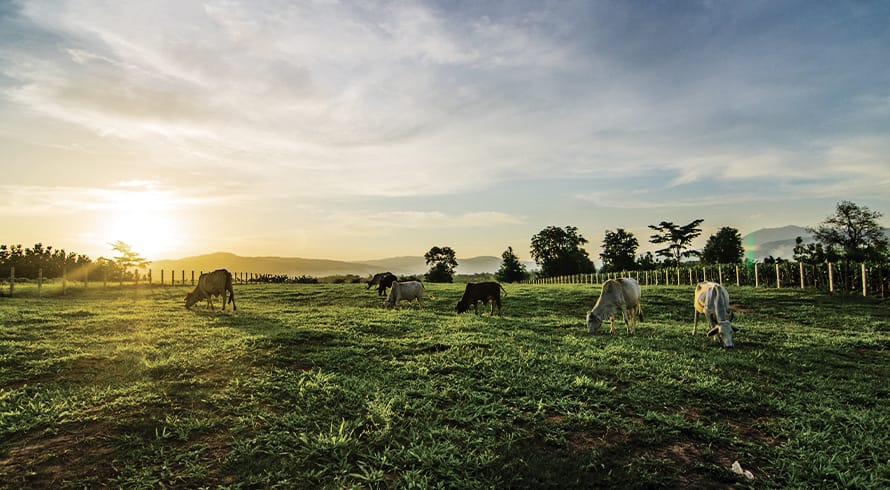Recent environmental law developments impacting solar, battery and grid infrastructure projects
This includes the Department of Forestry, Fisheries and the Environment (DFFE), which has undertaken several Strategic Environmental Assessments (SEAs) over the past 10 years around energy technologies and grid infrastructure to help formulate tools that can assist in identifying activities that can be excluded from the requirement to obtain an environmental authorisation (EA) in terms of the National Environmental Management Act 107 of 1998 (NEMA). The regulated timeframe for the EA process is otherwise very extensive, varying between 6 to 12 months, which excludes any pre-application time expensed on preparation and specialist studies.
As part of this endeavour to streamline the EA process, the Minister of Forestry, Fisheries and the Environment (Minister) recently published the below norms in terms of NEMA to provide for the exclusion of certain activities pertaining to the development or expansion of battery energy storage systems (BESS) and solar PV generation facilities from having to obtain an EA.
Battery storage and solar PV exclusion norms
On 27 March 2024, the Minister adopted both (i) the Norm for the Exclusion of Identified Activities Associated with the Development and Expansion of Battery Storage Facilities in Areas of Low or Medium Environmental Sensitivity (BESS Exclusion Norm); and (ii) the Norm for the Exclusion of the Development and Expansion of Solar Photovoltaic Facilities in Areas of Low or Medium Environmental Sensitivity (Solar Exclusion Norm).
Both the BESS Exclusion Norm and Solar Exclusion Norm (collectively the Norms) apply to:
- Development and expansion listed activities that have yet to commence, and which are wholly located in areas identified by the DFFE’s web-based screening tool as being of low or medium environmental sensitivity in respect of specified themes (agriculture, aquatic and terrestrial biodiversity, and animal and plant species). In this regard, the Norms set out the specific listed activities under the 2014 Environmental Impact Regulations’ (EIA Regulations) Listing Notices that, if triggered, are excluded from the requirement to obtain an EA. The Solar Exclusion Norm further provides that the exclusion extends to any associated listed activity necessary for the realisation of such facilities. While this is not expressly provided in the BESS Norm, the list of excluded activities is more broad in the latter and extends to both the BESS facility and grid infrastructure.
- Associated linear infrastructure, which may be located in “very high” or “high” environmental sensitivity areas, provided prescribed requirements are met to verify site sensitivity. This would include electricity transmission and distribution infrastructure forming an integral part of the facility. The Standard for the Development and Expansion of Power Lines and Substations within Identified Geographical Areas is therefore not applicable in this instance.
Procedural requirements
While qualifying projects under the Norms are exempt from having to follow the full basic assessment or environmental impact assessment processes under the EIA Regulations, the Norms still prescribe procedural requirements that must be adhered to. This includes inter alia:
- A physical site sensitivity verification (SSV) inspection, to be undertaken by qualified specialists and to be supplemented by available desktop information. Should it be confirmed as part of the SSV process that species of concern will be impacted, or that the cumulative impacts are not acceptable, the exclusion under the Norms will not apply and application will have to be made for an EA.
- Preparation of an SSV report by a registered environmental assessment practitioner (EAP) or registered environmental scientist, inclusive of the relevant specialist reports.
- A consultation process, the requirements of which appear to be less onerous than what is prescribed under the EIA Regulations. That being said, all public participation processes will always be tested against the “meaningfulness” threshold as contemplated under NEMA.
- Application to the DFFE for registration of the project, which must be made in the prescribed format and include specified information. Noteworthy in respect of the Solar Exclusion Norm is the need to include a letter of consent from Eskom, which confirms that the proposed layout of the facility will not unnecessarily obstruct access to main electricity transmission or distribution substations.
The prescribed timeframes are significantly reduced in comparison to the EIA Regulations, with the competent authority required to register the project within 10 days of receipt of all the prescribed information. Once registered, interested and affected parties are to be notified within seven days, with the provisions of the NEMA Appeal Regulations applicable to any registration issued in terms of the Norms.
The Norms also set out specific requirements in respect of re-registration, which is required insofar as there is a change in ownership of the relevant BESS or solar PV facility prior to commencement of construction, upon completion of construction, or after completion of construction.
Non-compliance with various provisions of the Norms constitute an offence in terms of NEMA, and may attract a fine not exceeding R10 million or imprisonment not exceeding 10 years, or both.
Transitional arrangements
All pending applications for an EA made in terms of the EIA Regulations, Renewable Energy Development Zone Notice or Strategic Transmission Corridors Notice must be finalised or otherwise withdrawn.
Any SSVs that meet the requirements of the Norms and were undertaken as part of an EA application within six years preceding the submission of a registration request, may be utilised in terms of the Norms to support a registration application. Qualifying specialist work that has therefore already commenced or been undertaken in terms of the EIA Regulations will not result in any wasted costs or time.
Revised Standard for the Development and Expansion of Electricity Transmission and Distribution Power Line Infrastructure
On 28 March 2024, the Minister published a notice of her intention to adopt the revised Standard for the Development and Expansion of Electricity Transmission and Distribution Power Line Infrastructure (Draft Standard), which will repeal and replace the existing Standard for the Development and Expansion of Power Lines and Substations within identified Geographical Areas, previously published in July 2022 (Current Standard). As with the Current Standard, the intention of the Draft Standard is to exclude certain activities relating to grid infrastructure development and expansion from the need to obtain an EA.
The updates in the Draft Standard are based on electricity grid infrastructure SEAs undertaken by the DFFE, as well as lessons learnt to date from EA processes undertaken for grid infrastructure, implementation of generic environmental management programmes for powerline and substation development or expansion, and application of the Current Standard.
As with the Current Standard, the Draft Standard provides for inter alia:
- The listed activities under the EIA Regulations that are excluded from the requirement to obtain an EA, as well associated activities and infrastructure that fall within such exclusion.
- The geographical areas that such activities may be located in based on environmental sensitivity.
- Procedural requirements that must be complied with, including in respect of identifying the preliminary and pre-negotiated corridor, the public consultation process, undertaking a SSV, preparing a SSV report and submitting a registration application.
In comparing the Draft Standard to the Current Standard, the proposed amendments appear to be mainly aimed at catering for or clarifying some procedural requirements, including:
- An EAP or a registered environmental scientist must be appointed to fulfil the requirements to register the proposed development in accordance with the Draft Standard. The Current Standard only provides for the appointment of an EAP in this instance.
- Various corridor alternatives must be considered, which is not a requirement under the Current Standard.
- While the registration must still be issued by the competent authority within 30 days of receipt of all the prescribed information, provision is now made for the competent authority to indicate if information is outstanding within 14 days of receipt of the registration application.
- Proof of registration will no longer need to be lodged with the relevant local municipality and the provincial department prior to commencement.
- Additional provisions relating to any change in ownership and associated re-registration requirements. While the Current Standard does provide for changes that occur in respect of the whole facility during pre-construction and construction, the Draft Standard also caters for instances where the changes relate to only part of the facility, and/or that otherwise occur after construction.
- Removal of the General Environmental Principles included under Chapter 3 of the Current Standard. These principles do, however, appear to have been incorporated into environmental specifications that apply to corridor planning and identification.
Comments on the Draft Standard are due on 29 April 2024.
The information and material published on this website is provided for general purposes only and does not constitute legal advice. We make every effort to ensure that the content is updated regularly and to offer the most current and accurate information. Please consult one of our lawyers on any specific legal problem or matter. We accept no responsibility for any loss or damage, whether direct or consequential, which may arise from reliance on the information contained in these pages. Please refer to our full terms and conditions. Copyright © 2025 Cliffe Dekker Hofmeyr. All rights reserved. For permission to reproduce an article or publication, please contact us cliffedekkerhofmeyr@cdhlegal.com.
Subscribe
We support our clients’ strategic and operational needs by offering innovative, integrated and high quality thought leadership. To stay up to date on the latest legal developments that may potentially impact your business, subscribe to our alerts, seminar and webinar invitations.
Subscribe



